Palak Khichdi recipe is a one pot nutritious meal of mung lentils and rice with spinach (palak), onions, tomatoes, peanuts, herbs and spices. This dish is easy to prepare as well as healthy. In this palak khichdi, the addition of spinach and peanuts gives a lot of nutrition boost to the otherwise healthy khichdi.
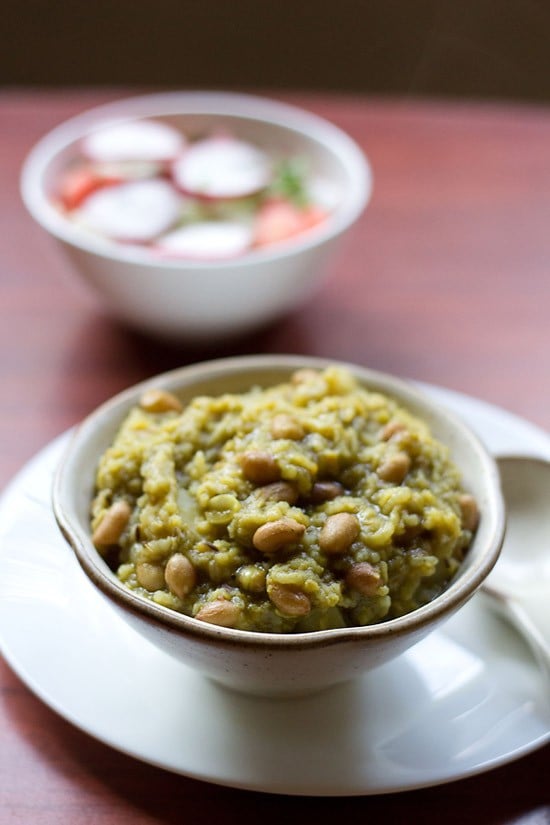
About Palak Khichdi Recipe
This recipe of palak khichdi was shared with me by my sister. In this recipe, I have included peanuts not only for the nutritional benefit but also for the nice texture they give to the otherwise smooth khichdi.
Being from Indian state of Maharashtra, I am used to having peanuts in many recipes like Poha and some dry vegetable dishes.
I also make a spicy and hot peanut – green chili mixture called as ‘Thecha‘ in the Marathi language. In fact, peanuts and cashews are two of my favorite ingredients to add crunch and texture to many recipes.
The palak khichdi has a consistency like that of thick porridge and not like that of a Pulao. You can easily adjust the consistency as per your preference by adding less or more water. It is easy to digest and makes excellent food for small kids and convalescing people.
If making for small kids or people recovering from illness then skip adding pungent spices like green chili, red chili powder. Keeping in mind the health factor you can also omit the spices or some of the ingredients from the recipe.
If you have nut allergy then don’t add peanuts. I make this rice dish even without peanuts on occasion and it tastes good.
For a vegan recipe use a neutral-flavored oil instead of ghee. Also, don’t drizzle the palak khichdi with oil while serving.
Other similar recipes you can make with spinach and rice are:
Serve palak khichdi hot or warm with plain curd/yogurt or raita or with pickle.
How to make Palak Khichdi
Preparation
1. Pick and rinse both ½ cup rice and ½ cup moong dal together in water using a colander or strainer.
You can use any variety of non-sticky short-grained, medium-grained or long-grained rice like basmati rice.
For the mung lentils, I always use husked and split yellow mung lentils. But you can add split lentils with the green husks.
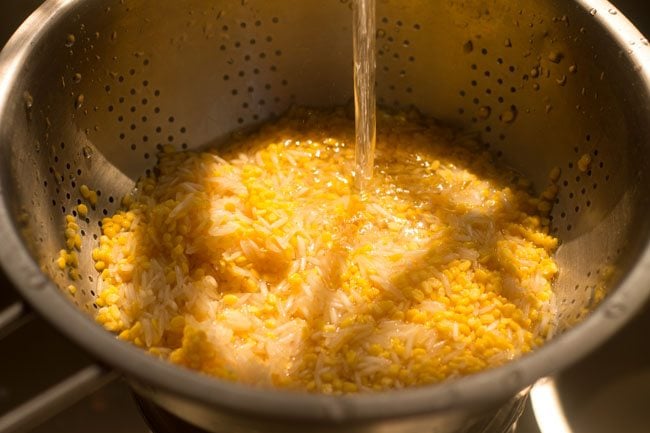
2. In a bowl, soak them together in enough water for about 30 minutes.
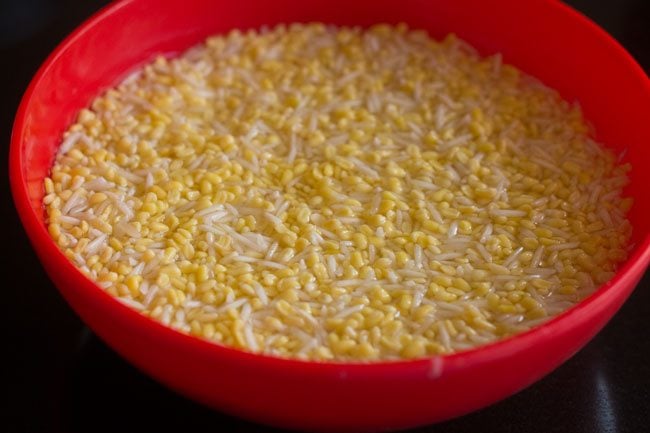
3. Measure and keep all the ingredients ready.
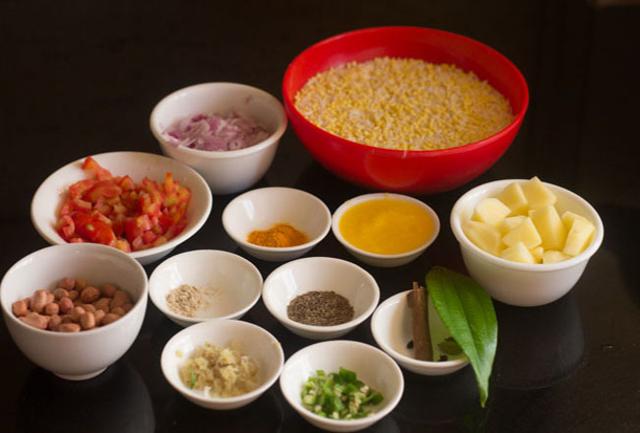
4. Rinse some palak or spinach leaves well in fresh water. Take an approximate portion of the spinach leaves that will yield about 2 cups of chopped spinach.
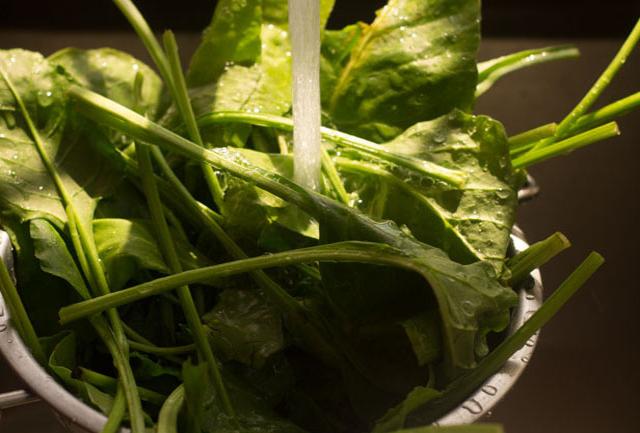
5. Drain all the water and then chop the leaves. Measure and add 2 cups of chopped spinach leaves in a mixer or blender.
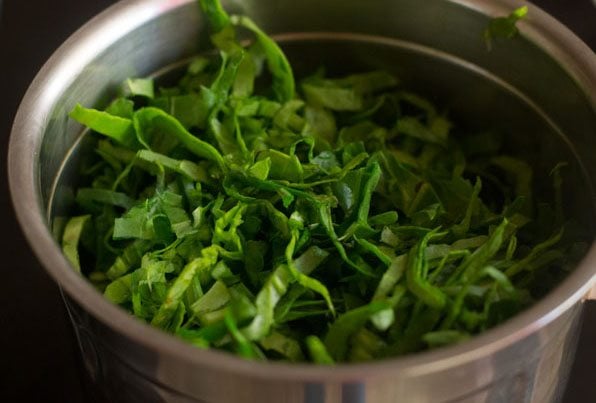
6. Adding very little water, make a smooth puree of spinach.
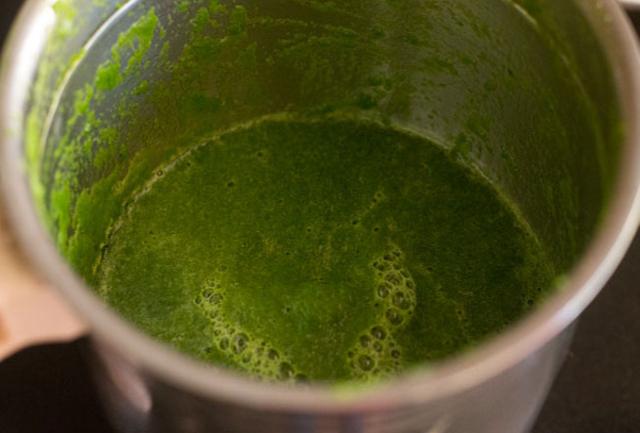
7. Keep the spinach puree aside.
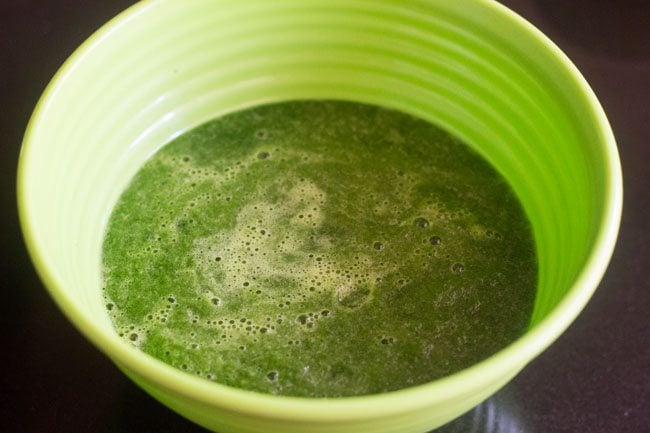
Sauté Ingredients
8. Heat ghee or oil in a 3 litre stovetop pressure cooker. Then add the following ingredients:
- ½ teaspoon caraway seeds (or cumin seeds)
- 1 inch cinnamon
- 1 tej patta (Indian bay leaf)
- 2 cloves
- 2 green cardamoms
You can also make this palak khichdi in Instant pot or pan adding water as needed.
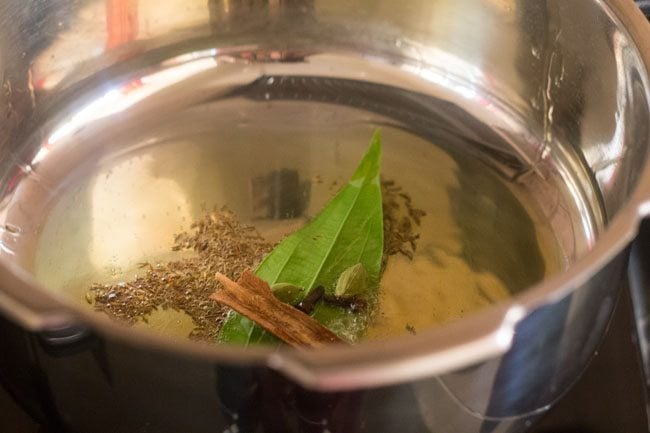
9. On low to medium low heat, fry the whole spices for some seconds till they become fragrant.
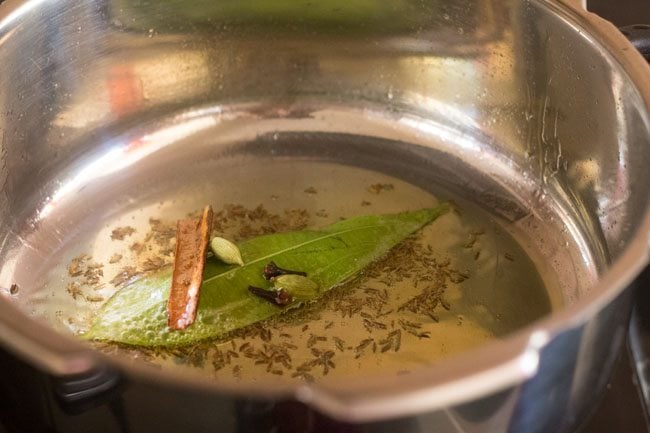
10. Add 1 medium sized finely chopped onion (about ⅓ cup chopped onions)
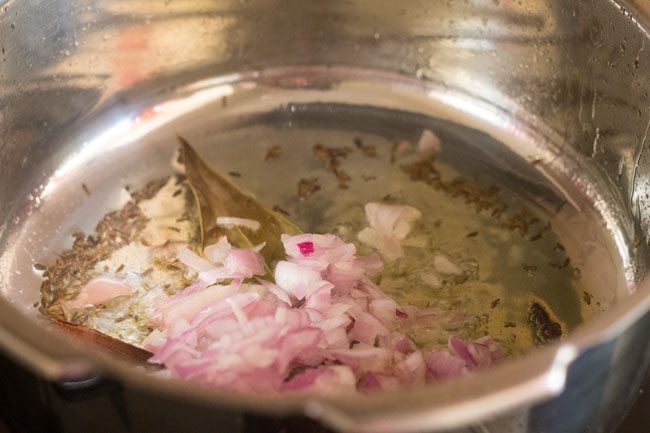
11. Saute stirring often till they become golden.
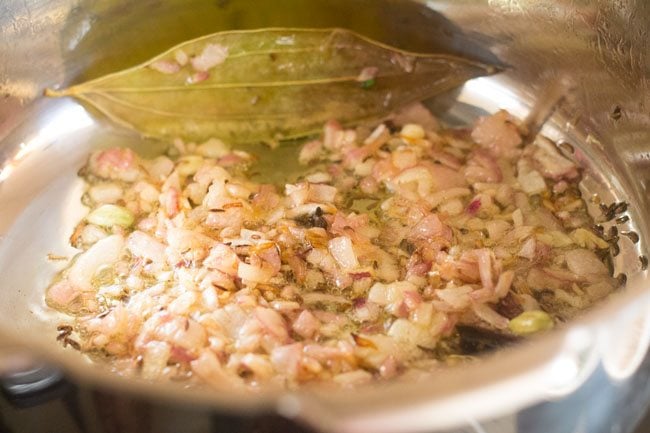
12. Then add 1 teaspoon ginger-garlic paste and 1 chopped green chili.
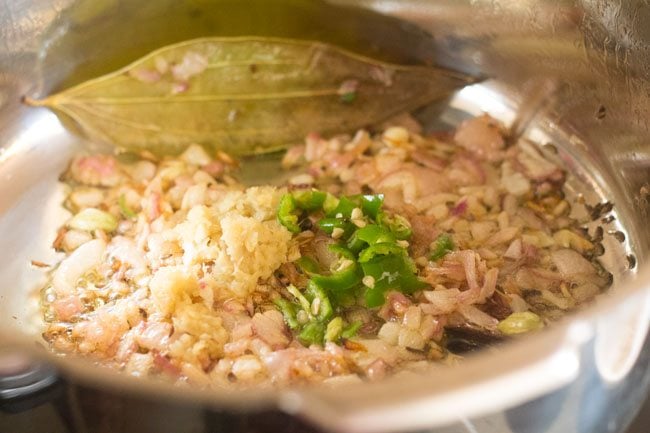
13. Saute for some seconds on low to medium-low heat or till the raw aroma of the ginger and garlic goes away.
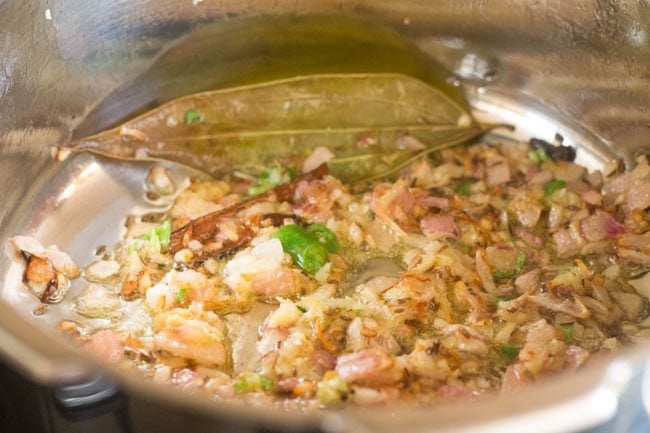
14. Then add 1 medium-sized tomato, chopped finely (about ½ cup chopped tomato).
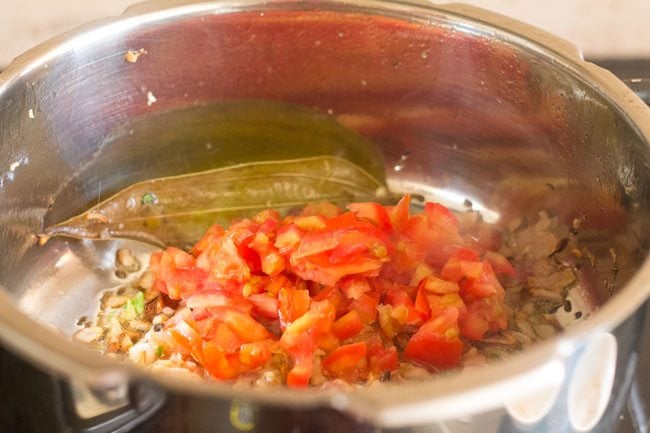
15. Saute stirring often till the tomatoes begin to soften.
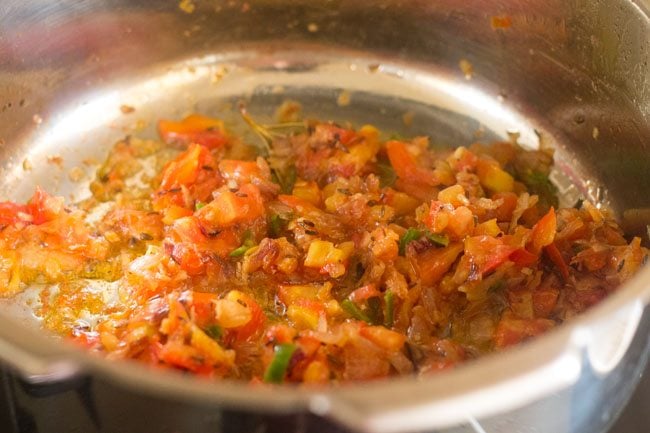
16. Then add ¼ teaspoon turmeric powder and 1 pinch of asafoetida (hing).
To make this dish gluten-free omit the asafoetida or use gluten-free asafoetida.
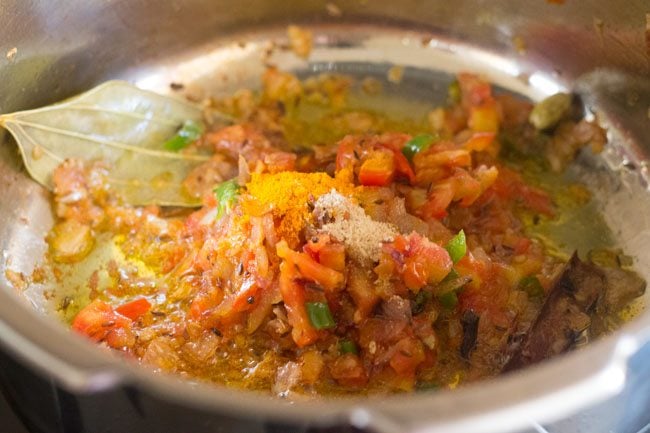
17. Stir and mix well.
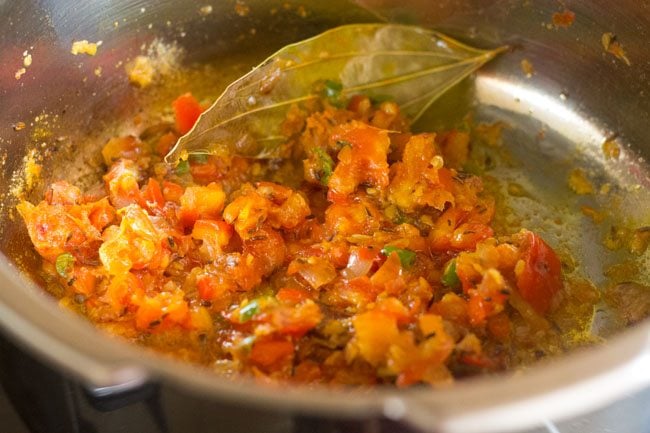
18. Now add ¼ or ⅓ cup of raw peanuts and 1 medium-sized chopped potato.
The addition of potatoes is optional and can be skipped.
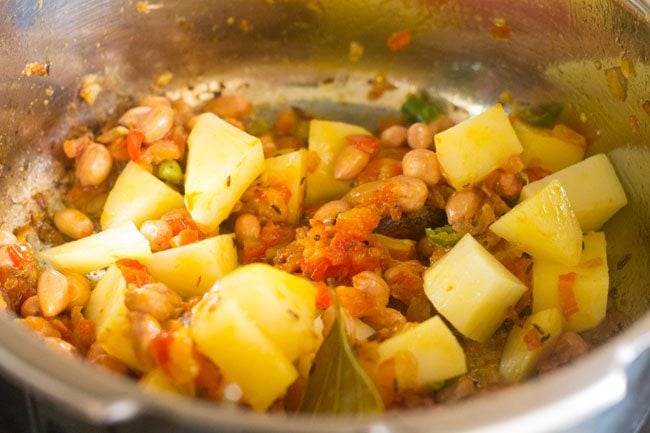
19. Saute for about 2 minutes.

20. Add the prepared spinach puree.
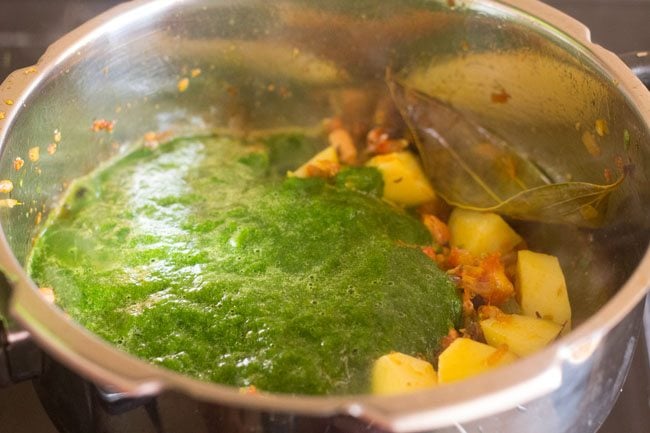
21. Continue to saute the spinach puree for 2 to 3 minutes on low to medium-low heat.
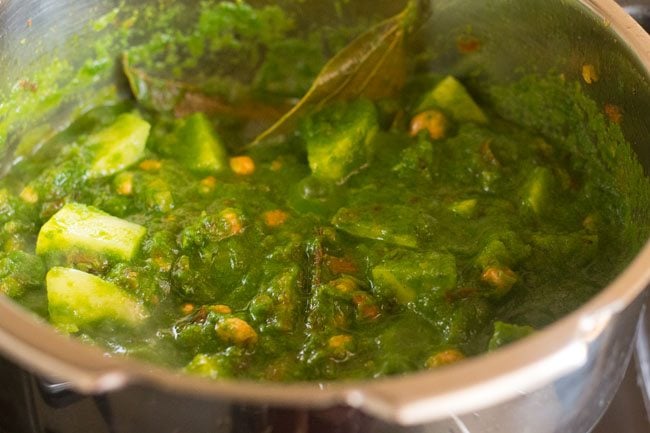
22. Drain all the water from the rice and moong dal.
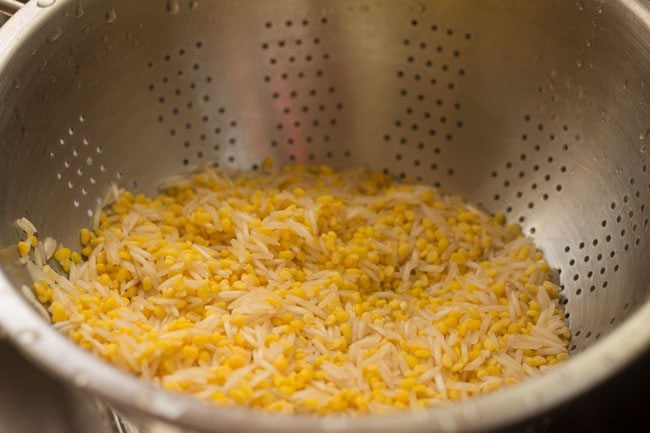
23. Add the strained rice and moong dal to the mixture in pressure cooker.
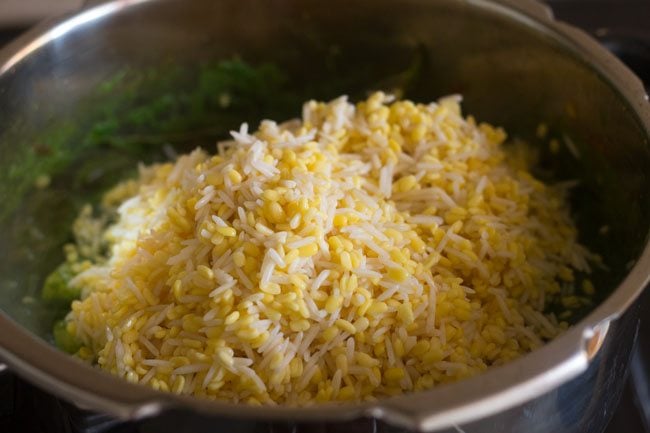
24. Stir and mix well.
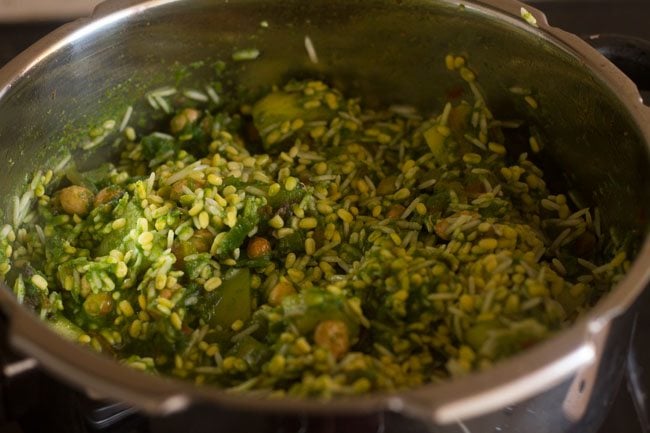
Make Palak Khichdi
25. Pour 3.5 to 4 cups of water.
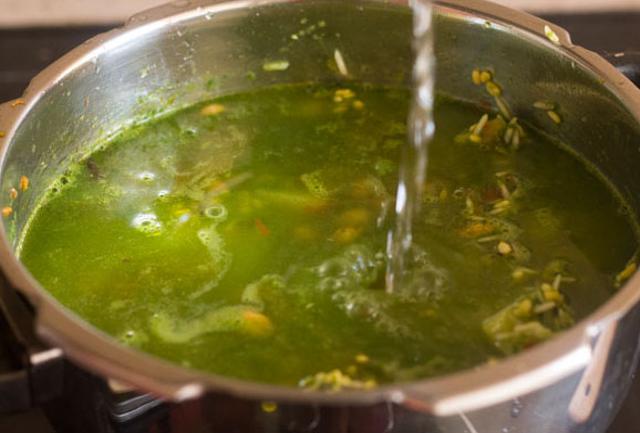
26. Add salt as required. Stir and mix well. Check the taste of the liquid and it should be slightly salty.
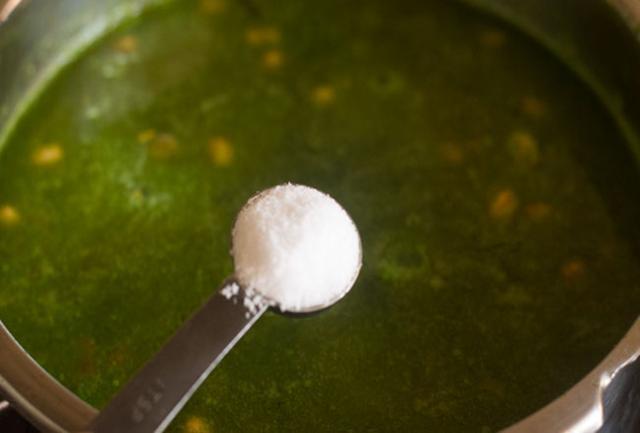
27. Pressure cook on medium heat for 5 to 6 whistles. Once the pressure settles down on its own, then only remove the lid.
Check the consistency of the palak khichdi.
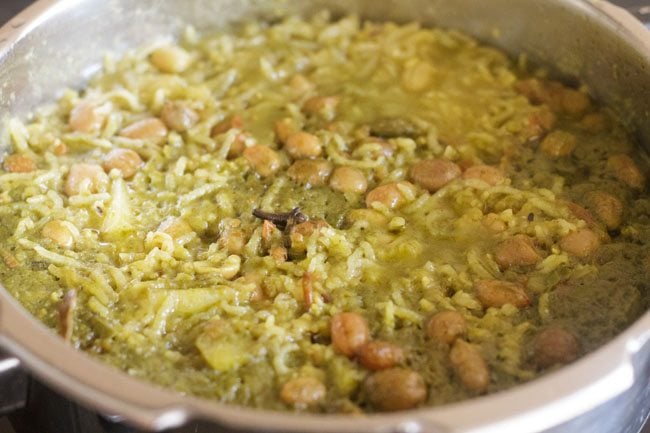
30. If the khichdi looks thick, then you can add some hot water and simmer for a few minutes.
Remember to stir often as otherwise the spinach khichdi gets stuck at the bottom. If it appears thin, then simmer till you get the desired consistency.
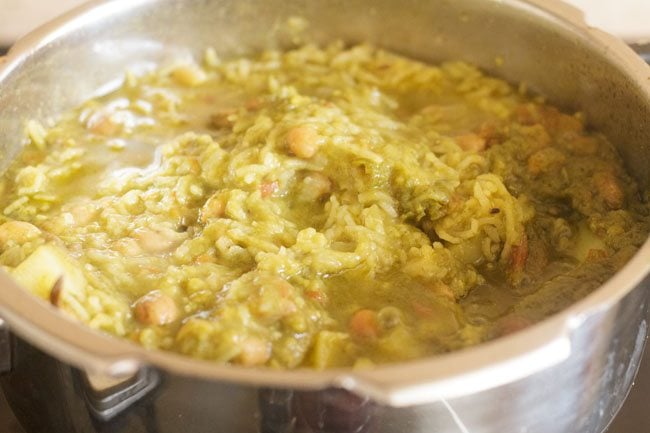
31. While serving, transfer the Palak Khichdi in bowls or plates and top with ½ to 1 teaspoon of ghee, if preferred.
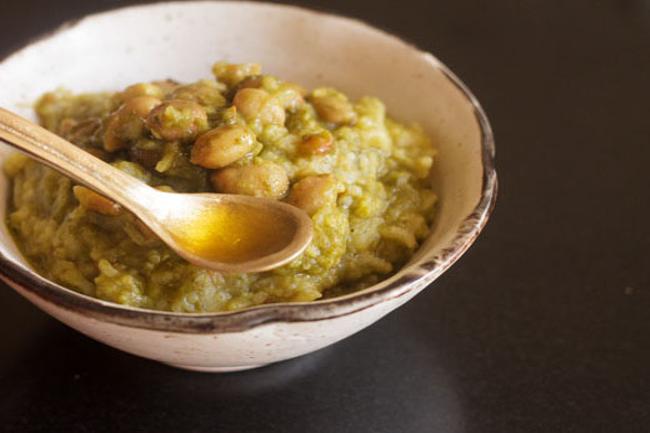
32. Serve the Palak Khichdi hot or warm with plain curd (yogurt) or raita or a simple vegetable salad or papad.
It makes for a filling and healthy meal that you can prepare for lunch or dinner.
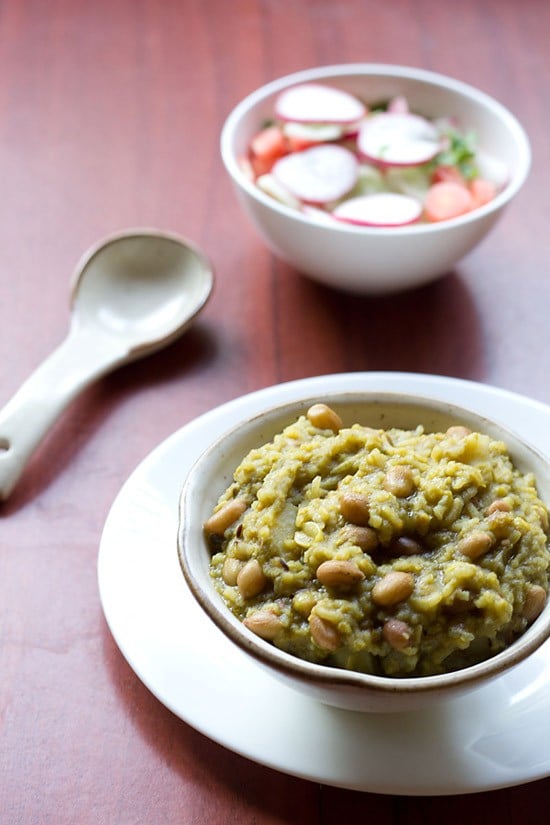
More Tasty Khichdi Varieties
Bengali Recipes
Dal (Lentils) & Legumes
Breakfast Recipes
North Indian Food Recipes
Please be sure to rate the recipe in the recipe card or leave a comment below if you have made it. For more vegetarian inspirations, Sign Up for my emails or follow me on Instagram, Youtube, Facebook, Pinterest or Twitter.
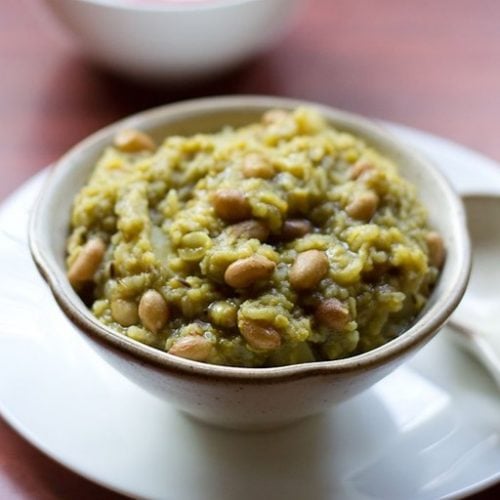
Palak Khichdi Recipe (Spinach Khichdi)
Ingredients
- 2 cups chopped palak (spinach)
- ¼ or ⅓ cup raw peanuts
- ½ cup moong dal (yellow mung lentils)
- ½ cup long grained rice or basmati rice
- 1 medium size onion, finely chopped
- 1 medium size tomato, chopped
- 1 medium size potato, chopped
- 1 inch cinnamon
- 1 tej patta (indian bay leaf)
- 2 cloves
- 2 green cardamoms
- ½ teaspoon caraway seeds (shah jeera) or cumin seeds
- ½ inch ginger + 3 to 4 garlic – crushed in a mortar-pestle to a paste or 1 teaspoon ginger garlic paste
- 1 green chilli, chopped
- ¼ teaspoon turmeric powder
- 1 pinch asafoetida (hing) * check notes
- salt as required
- 2 tablespoon Ghee or oil
- 3.5 to 4 cups water
Instructions
Preparation
- Pick and rinse both the rice and moong dal together with water in a strainer or colander.
- Soak them together in enough water for about 30 minutes in a bowl.
- Rinse the palak or spinach leaves well. Drain all the water.
- Chop them and then in a mixer or blender, make a smooth puree of the spinach adding very little water. Keep the spinach puree aside. You need about 2 cups of chopped spinach to make the puree.
Sautéing Ingredients
- Heat ghee or oil in a 3 litre stovetop pressure cooker. Add the caraway seeds or cumin seeds, cinnamon, tej patta, cloves and cardamoms.
- Fry the whole spices on low to medium low heat for some seconds till they become fragrant. Add the finely chopped onion and saute stirring often till they become golden.
- Add the ginger-garlic paste and the chopped green chilies. Saute for some seconds or till the raw aroma of the ginger-garlic goes away.
- Then add the chopped tomatoes and saute stirring often till they begin to soften.
- Add the turmeric powder and asafoetida (hing) and stir well.
- Now add the peanuts, potatoes and saute for about 2 minutes. You can choose to skip adding the potatoes.
- Add the spinach puree and continue to saute for 2 to 3 minutes on low to medium low heat.
- Drain the water from the rice and moong dal and add them to the spinach mixture in the pressure cooker. Mix very well.
Making Palak Khichdi
- Pour 3.5 to 4 cups water. Add salt as required and stir to mix.
- Check the taste and if required add some more salt. Pressure cook the khichdi on medium heat for 5 to 6 whistles.
- Once the pressure settles down on its own in the cooker, then only remove the lid. Check the consistency of the palak khichdi.
- If the consistency looks thick, then you can add some hot water and simmer for a few minutes.
- Remember to stir often as otherwise the khichdi gets stuck at the bottom. If the consistency appears thin or runny, then simmer stirring often till you get the desired consistency.
- While serving, pour the palak khichdi in bowls or plates and top with ½ to 1 tsp of ghee.
- Serve hot with plain curd/yogurt or raita or a simple vegetable salad or roasted papad.
Nutrition Info (Approximate Values)
Palak Khichdi recipe from the archives was first published on January 2014.
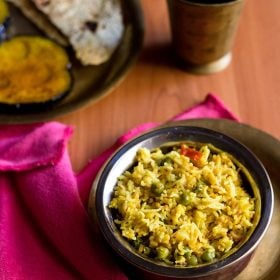
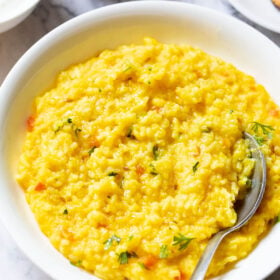
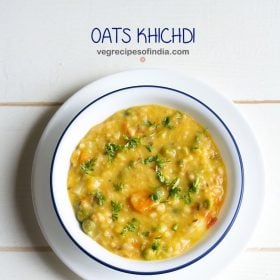
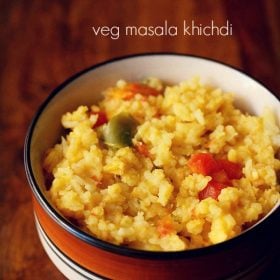
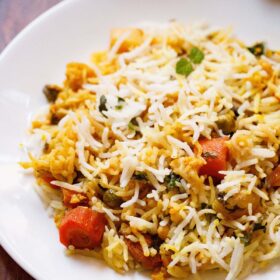
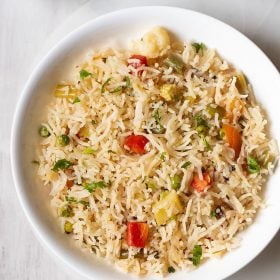
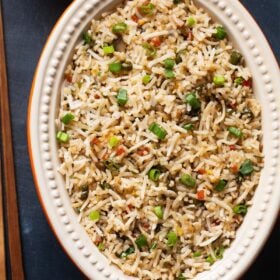








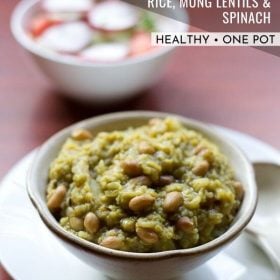
Comments are closed.